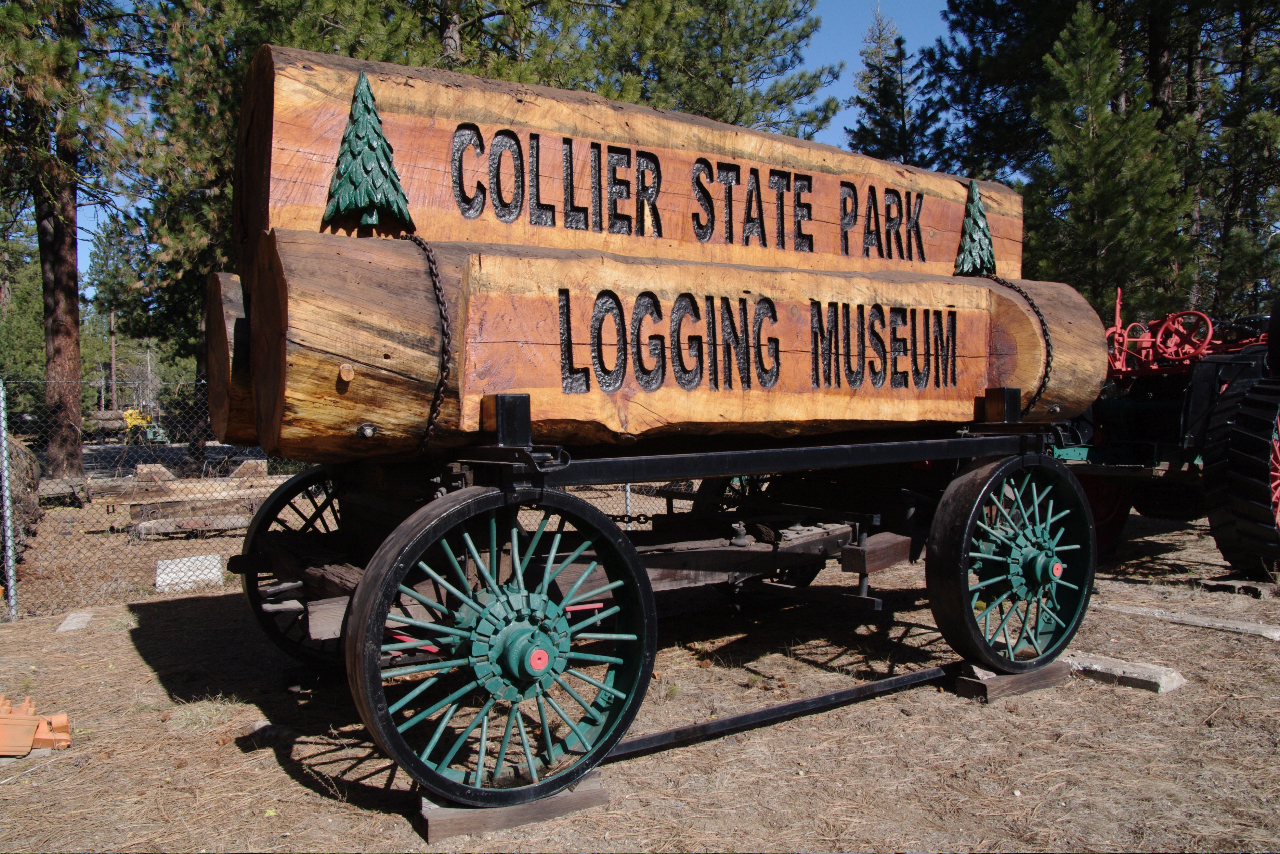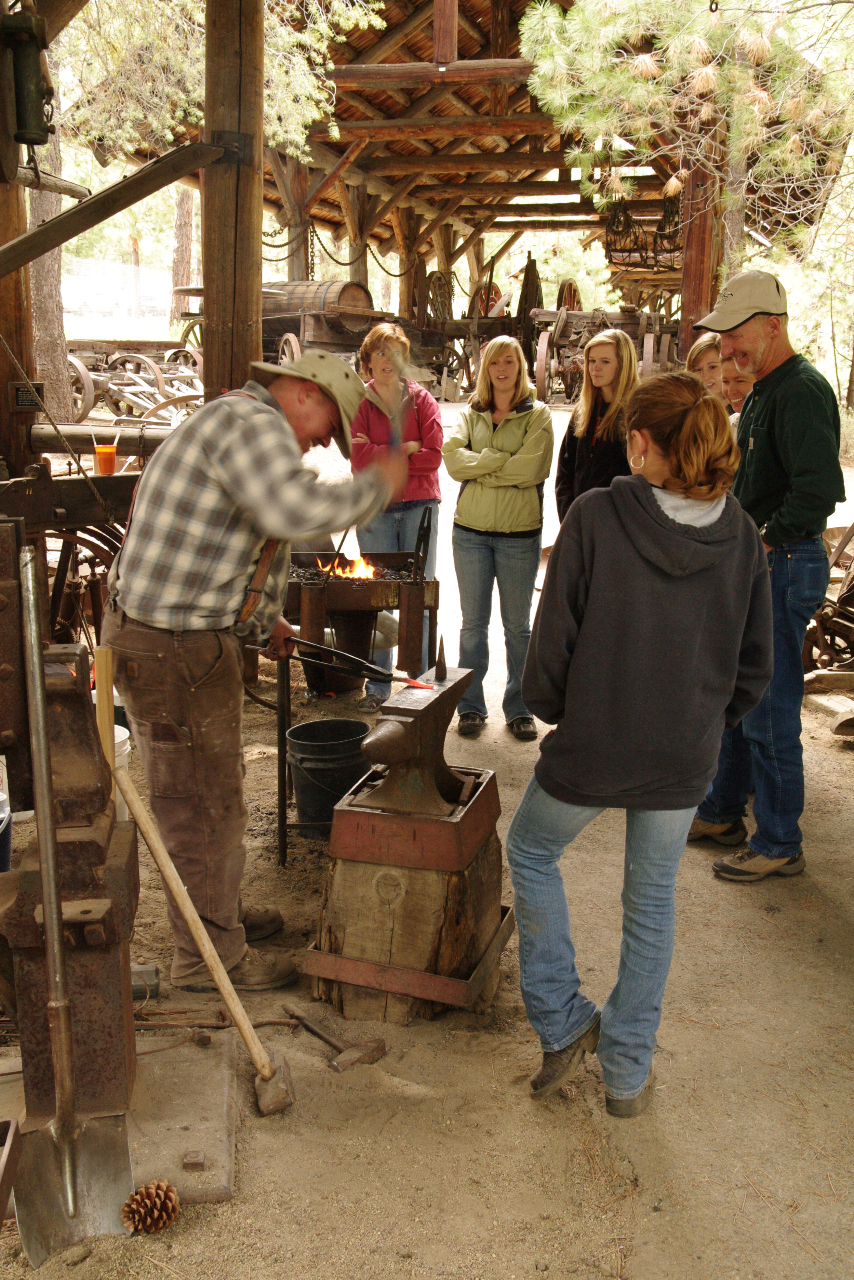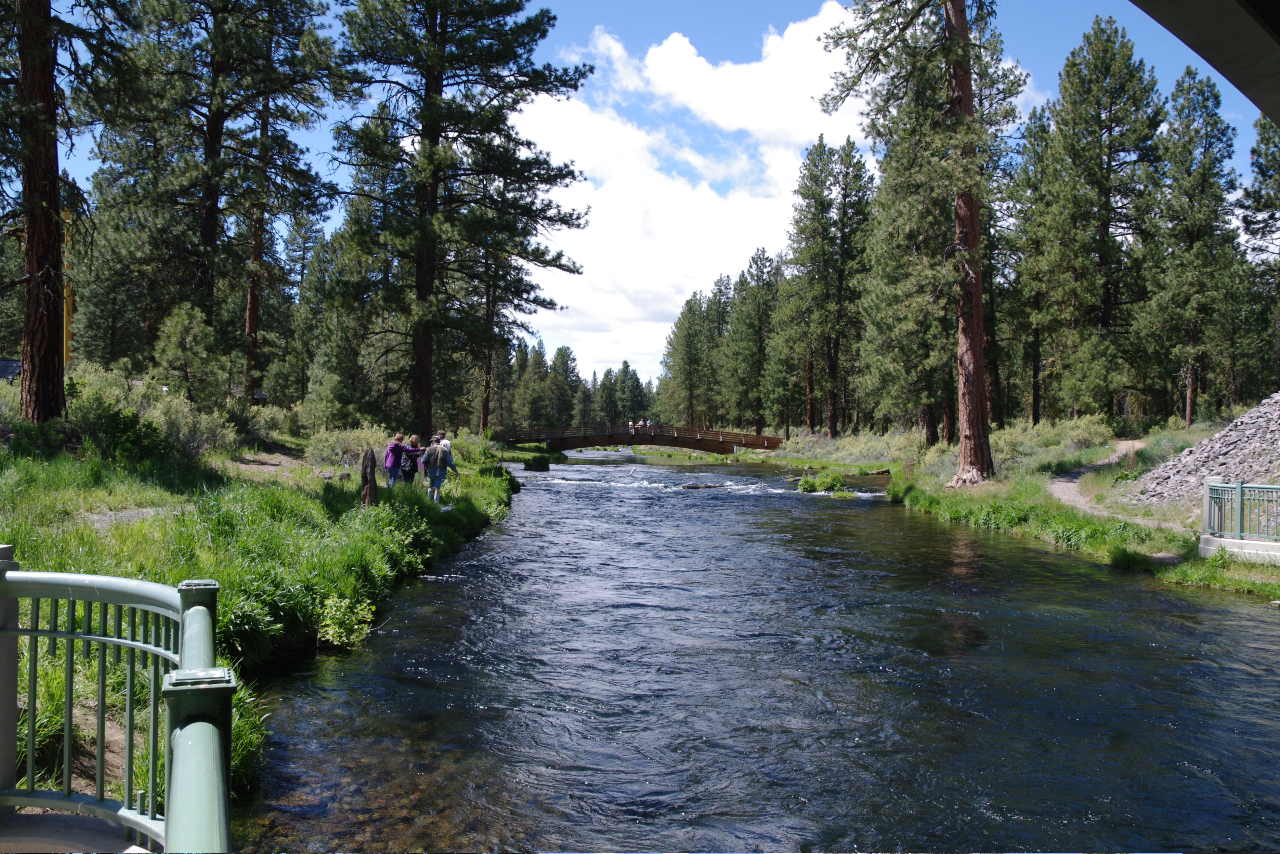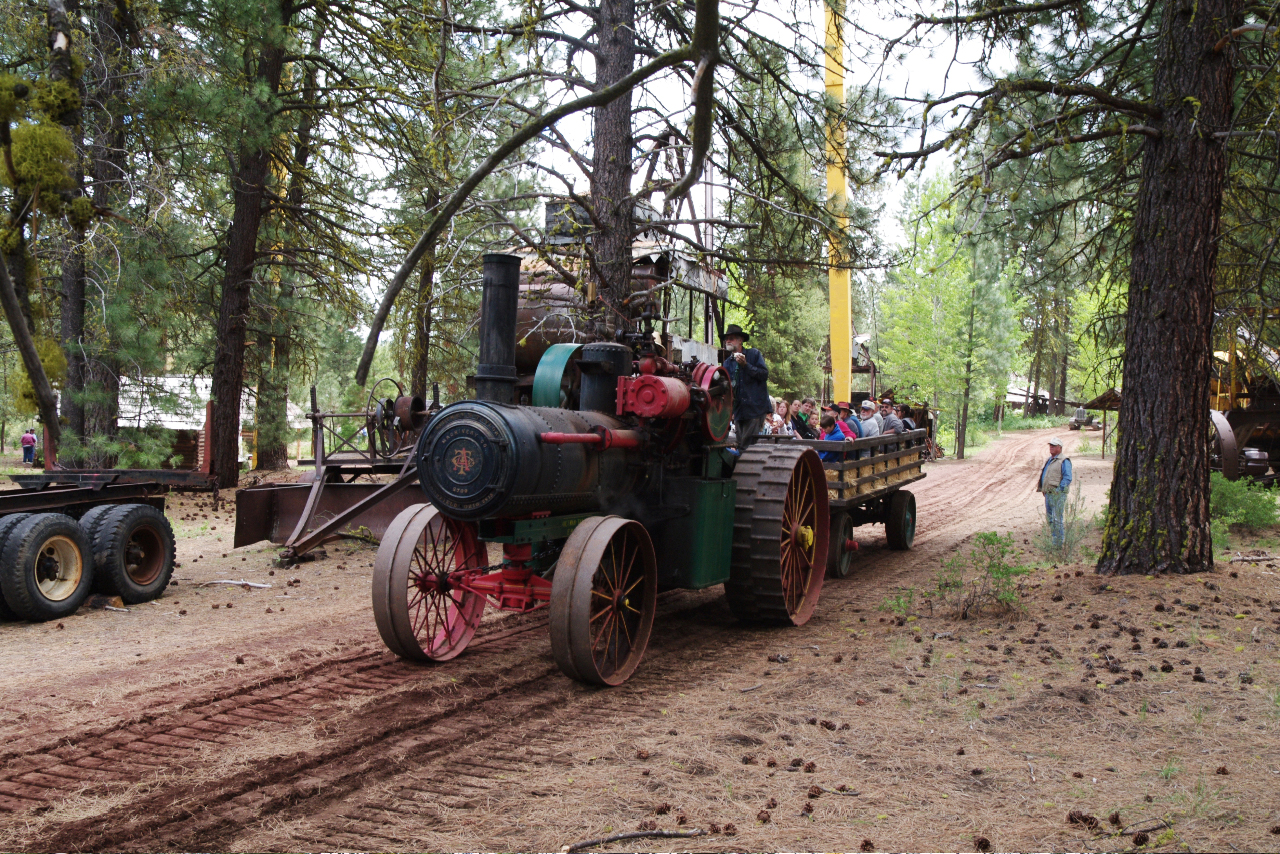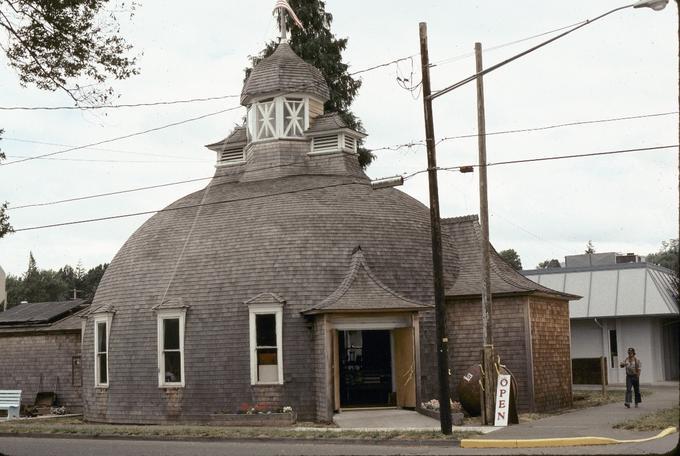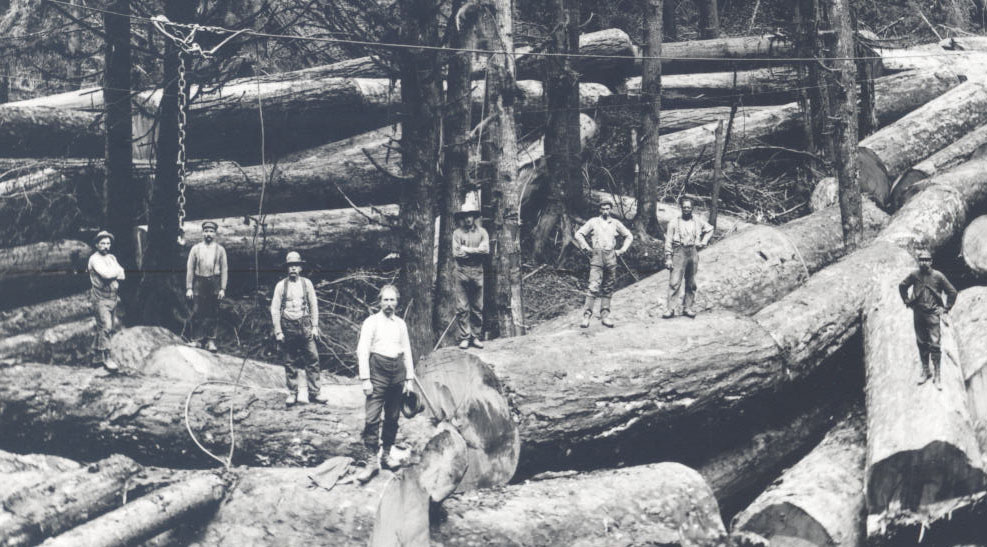Collier Memorial State Park and Logging Museum, located at the confluence of the Williamson River and Spring Creek, straddles U.S. Highway 97 thirty miles north of Klamath Falls. The park’s original 146 acres were donated in 1945 by Alfred “Cap” Collier, a Klamath County lumberman, and his brother Andrew “Andy” Collier, a banker, in honor of their parents Charles and Janet Collier. Three thousand visitors attended the park’s grand opening in August 1948. Over the decades, more land was added to the park to bring its total acreage to 525, and the equipment collection has grown to include thousands of artifacts from eastern Oregon.
The park includes a campground adjacent to the west bank of the Williamson River, with sites for both tents and recreational vehicles. Visitors fish in the river and in Spring Creek, and a ten-mile equestrian trail runs west from Collier Park to Jackson Kimball Park, on the east edge of the Wood River Valley.
Collier is home to the largest collection of historic logging equipment in Oregon and perhaps in the nation. The original artifacts were donated by the Collier brothers, who wanted to safeguard the tools that had been vital to the central and eastern Oregon logging and milling industries. In addition, original cabins, stores, and offices were moved to the park to create a Pioneer Village.
The museum, most of which is in the open, displays logging equipment dating from the era of animal-powered logging through the early 1980s, and it holds the largest collection of McGiffert and McVay log loaders in existence. There are also steam tractors, a steam donkey, a steam locomotive, and a Corliss steam engine that ran Long-Bell Lumber Company’s sawmill for forty-seven years in Weed, California. Other early equipment includes several sets of high wheels, chain-driven Mack trucks, and pull-type road graders. Mid-twentieth century logging is represented by a collection of power saws, gasoline and diesel-powered tractors, a Weyerhaeuser truck reload, a log-raft tugboat, and two sawmills, one operable.
Collier Park staff and volunteers present interpretive programs, and on Father’s Day the park has a Living History Day with music, dance presentations, Indian drumming, logging and milling exhibits, and hayrides on a wagon pulled by a steam tractor. In September, the Friends of Collier Park Logging Museum, a volunteer group, hosts the Loggers’ Breakfast at the park on the west bank of Spring Creek.
Associated with the park is the OC&E Woods Line State Trail, which runs a hundred miles from Klamath Falls east through Bly and on to Sycan Marsh on Weyerhaeuser Timber Company’s log train railbed. A restored Oregon California and Eastern caboose is parked at the Klamath Falls trailhead.
-
![Collier Memorial State Park Logging Museum sign visible from Hwy 97.]()
Collier SP, sign.
Collier Memorial State Park Logging Museum sign visible from Hwy 97. Photo Craig Ditman
-
![Blacksmith demonstration at Living History Day, Collier Memorial State Park, June 2010.]()
Collier SP, blacksmith, 2010.
Blacksmith demonstration at Living History Day, Collier Memorial State Park, June 2010. Photo Craig Ditman
-
![Spring Creek, Collier Memorial State Park.]()
Collier SP, Spring Creek.
Spring Creek, Collier Memorial State Park. Photo Craig Ditman
-
![Steam tractor hay ride, Collier Memorial State Park, June 2010.]()
Collier SP, tractor, 2010.
Steam tractor hay ride, Collier Memorial State Park, June 2010. Photo Craig Ditman
Related Entries
-
![Coos County Logging Museum]()
Coos County Logging Museum
Coos County’s Logging Museum in Myrtle Point is easily recognized by it…
-
![Timber Industry]()
Timber Industry
Since the 1880s, long before the mythical Paul Bunyan roamed the Northw…
Related Historical Records
Map This on the Oregon History WayFinder
The Oregon History Wayfinder is an interactive map that identifies significant places, people, and events in Oregon history.

